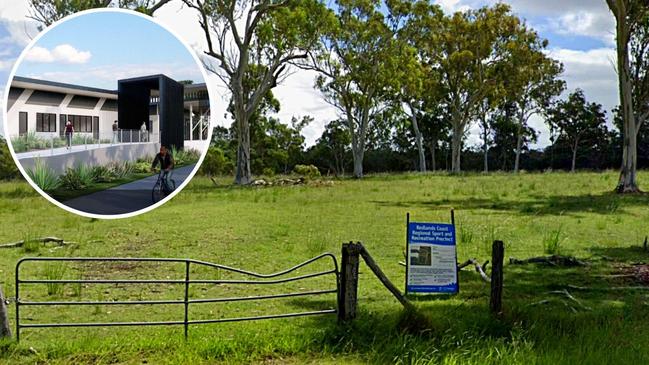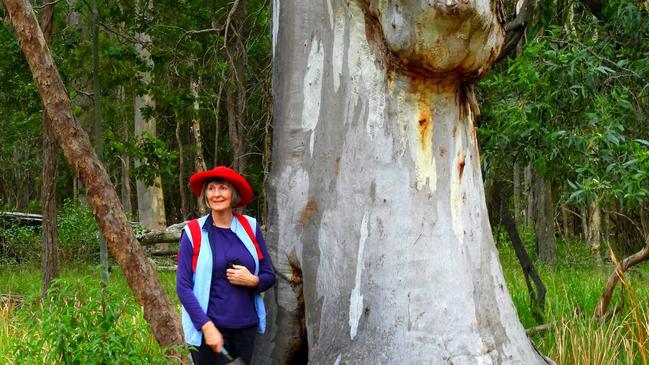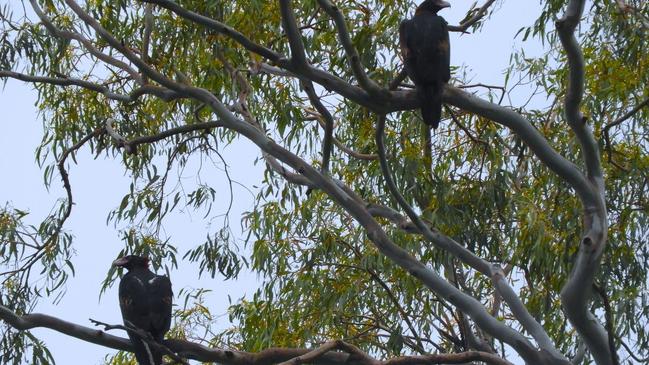$200m Heinemann Rd sports complex halted as federal environmental assessment gets under way
A $200 million sporting venue has been put on hold indefinitely while a federal environmental assessment is conducted with the contractor handed another similar project nearby.

Redlands Coast
Don't miss out on the headlines from Redlands Coast. Followed categories will be added to My News.
The federal government has halted work on a $200 million sports field while it conducts a review into the project, being funded by a local council.
Redland City Council was told it could not proceed with works at its Heinemann Rd complex until after the federal assessment had been completed.
Signs at the site this week told passers not to enter as “preliminary works” had started and they could “affect site conditions”.
A spokesman for federal Environment Minister Tanya Plibersek said the Redlands Coast Regional Sport and Recreation Precinct project needed to be assessed and approved under Australia’s national environment law, the Environment Protection and Biodiversity Conservation Act, before it could go ahead.

“Redlands City Council is currently preparing the assessment documentation. There is no statutory time frame for them to complete this.
“As the Minister is a decision maker in this process, she cannot comment on the matter.”
Weeks after the federal referral, in December, the council signed a $61 million contract with Gold Coast-based company Alder Constructions following revelations of estimates that the project would have a cost blowout to ratepayers of $200 million.

Since the project was put under federal review, preliminary works were started but are now believed to be halted.
Alder Constructions was last month awarded a $5.95 million contract to upgrade the nearby Charlie Buckler Sportsfields, a small tennis, rugby and cricket complex at Redland Bay.
Capalaba MP Don Brown said the delay in council handing over its environmental reports about the Heinemann Rd site at Mt Cotton to the federal government was likely “because they can’t find enough land in Redlands to offset the trees”.
Mr Brown did not elaborate on whether seeds would be planted outside Redlands or if the process of replanting seeds would be an effective and efficient method to offset the mature trees being axed.

In a statement, the council said it continued to prepare additional information required by the federal government under the Environmental Protection and Biodiversity Conservation Act but was unable to elaborate when works on the new complex would commence.
A top-level document revealed in February that the council had dismissed 18 other sites with all except one listed as being of environmental significance.
All of the proposed sites, bar one, already have houses and dwellings on them or chicken farms.
Five were tagged with recommendations as “potential for further investigation” and sites at 1-21-105 Longland Rd, Redland Bay and 293 & 297-331 Rocky Passage Rd, Redland Bay, had no State Koala Habitat Values listed.
However, the Longland Rd site, which fronts the Logan River, has been earmarked for a sewerage treatment plant.
That document did not include data about the chosen site at Heinemann Rd.
“The extent of offsets required, and their potential locations, remains subject to completion of further studies and investigations by council,” the statement said.
“Council has been collecting seeds endemic to the precinct to support future plantings if required.
“Council and Alder Constructions continue to have a contract for the construction of Stage 1 of the Redlands Coast Regional Sport and Recreation Precinct.”

The council statement also said it had collected hundreds of seeds from mature native gum trees, which it plans to bulldoze to make way for the $200 million venture, which is partly on a flood plain.
It started collecting the seeds for the site, which is also home to a family of eagles, after it was forced to refer its plans to axe 550 trees for the complex to the federal Environment Department late last year.
However, it refused to comment on whether planting seeds was the best way to offset the axed trees, some of which take more than six years to grow.





